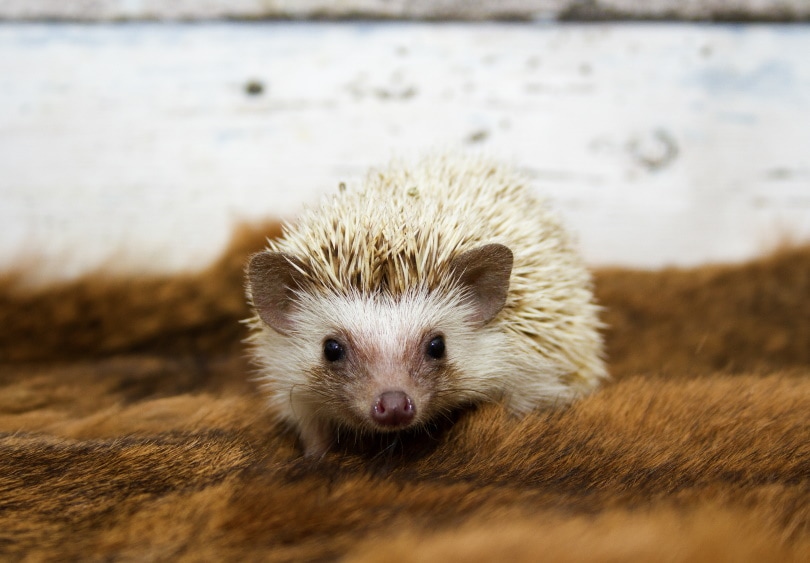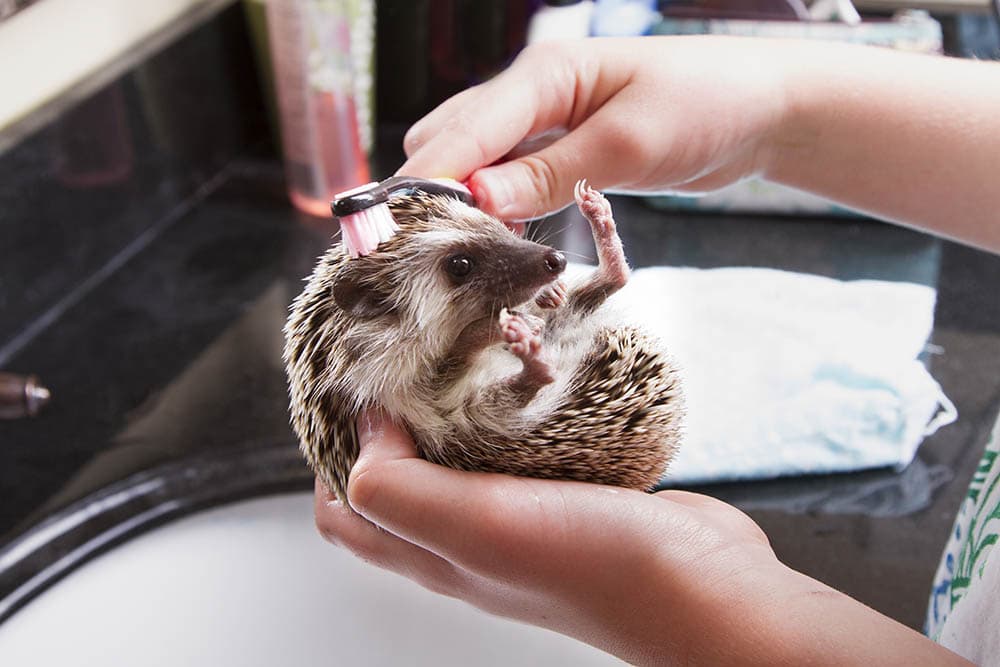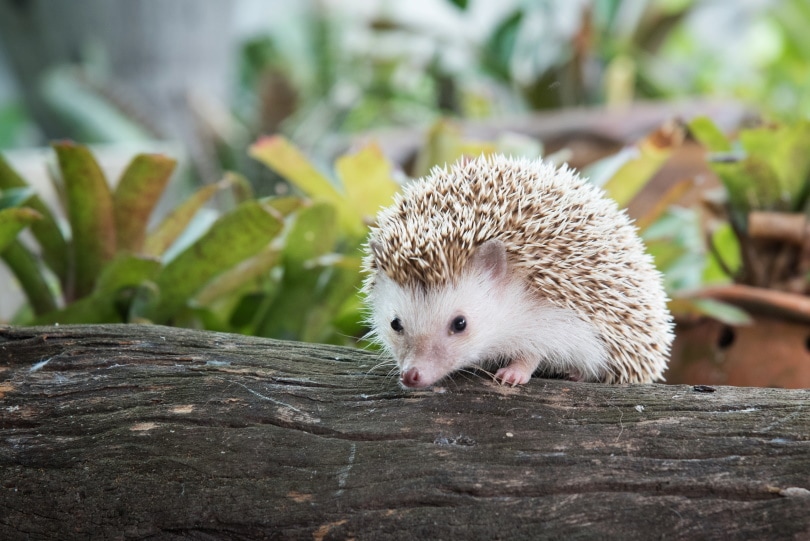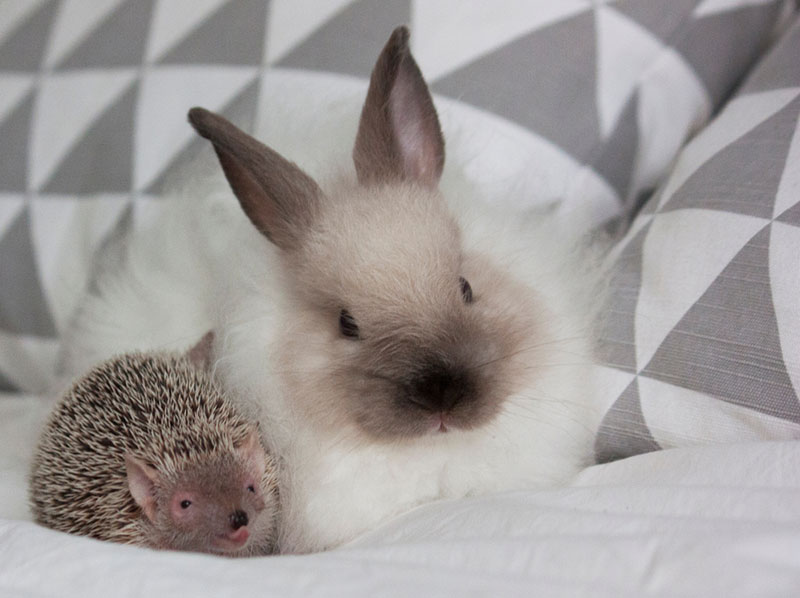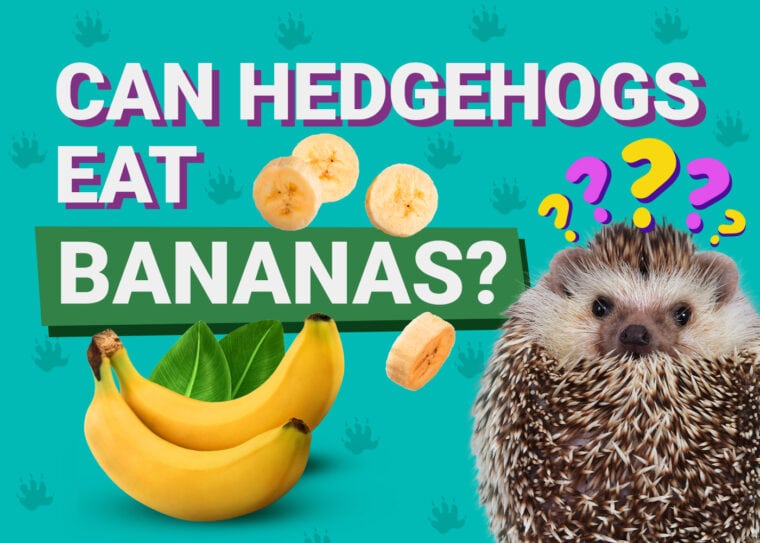
Hedgehogs might not be a species native to the U.S.A., but they’re steadily growing in popularity as pets in American households. That said, domesticated hedgehogs have different dietary requirements than their wild counterparts, and knowing how best to feed them will keep your prickly pet healthy and happy for as long as possible.
Since hedgehogs are well-known insect eaters, it can be surprising to learn that hedgehogs can thrive on fresh fruits and vegetables too. Bananas are especially tasty treats for your hedgehog because they contain fiber, folate, potassium, vitamin C and B6, and manganese. They’re also packed full of antioxidants and help support your hedgehog’s immune system.
However, while they’re are packed with nutrients that will keep your hedgehog healthy, the sugar content and your pet hedgehog’s risk of obesity make bananas suitable as occasional treats only. When you treat your hedgehog to a banana, make sure it’s ripe and chop the pieces into bite-sized chunks.
How to Feed Bananas to Your Hedgehog
One tablespoon of banana is all that you need to treat your hedgehog. A banana is soft enough that you don’t need to worry too much about preparation, but you can mash it up if your hedgehog prefers it that way. While certain low-sugar fruits can be offered two to three times a week, bananas should only be added to your hedgehog’s diet once a week, if that.

What Are the Health Risks of Feeding Bananas to Your Hedgehog?
While bananas are filled with various nutrients that make them great snacks for hedgehogs, making them a big part of your pet’s diet can cause more harm than good. This isn’t just due to a banana’s high sugar content either.
Both phosphorus and calcium are necessary nutrients for your hedgehog. Calcium helps form bones, while phosphorus supports the health of the kidneys, muscles, blood vessels, and bones and a regular heartbeat.
However, phosphorus can stop the body from absorbing calcium. This is why it’s important to feed your hedgehog food that has a higher level of calcium than phosphorus.
Bananas, with only 5 mg of calcium to 22 mg of phosphorus per 100 g, are too high in phosphorus to be an adequately healthy food for your hedgehog as a major part of their diet.
What Do Wild Hedgehogs Eat?
If you’re located in a country like the U.K., where hedgehogs are common sights in the backyard, slipping them a snack now and then is a great way to keep your spiky visitors safe and healthy. For new hedgehog caretakers, a few things that wild hedgehogs like to eat include:

What Foods Can Domesticated Hedgehogs Eat?
Unlike their wild hedgehog counterparts, your domesticated hedgehog shouldn’t eat a diet rich in insects. They don’t contain the nutrients that your domesticated pet needs for a balanced meal plan. Captivity also makes your hedgehog more prone to obesity, and it’s important to moderate how much your hedgehog eats depending on their activity level. As a rule of thumb, if your hedgehog has a 10% increase in weight, it’s a sign that you need to adjust their diet.
Domesticated hedgehogs thrive on a diet filled with the following foods.
Pellets or Kibble
Since pellets are the main part of your pet hedgehog’s diet, you need to make sure the ones that you feed them are filled with as many nutrients as possible. Use high-quality hedgehog kibble that contains at least 30% protein but less than 20% fat, and try to avoid formulas that include raisins and seeds.
Mealworms and Crickets
Hedgehogs digest chitin from insects, which is found in an insect’s exoskeleton. While your domesticated hedgehog shouldn’t live solely on live or freeze-dried insects and worms, they’re a good source of important nutrients.
Both mealworms and crickets are full of chitin and can be fed to your hedgehog live. Your hedgehog enjoys catching their food, and living prey can offer both exercise and mental stimulation for your pet. You can also feed nutrient-rich foods to the live prey before giving them to your hedgehog — a process known as “gut-loading” — to ensure that your hedgehog has a healthy diet.
Make sure you don’t feed your hedgehog too many live insects. They may learn to favor the more interesting prey over their other food.

Fresh Fruit, Vegetables, and Berries
In small amounts, various fresh fruit and veggies can make nice treats for your hedgehog. Remember to consider the sugar content before offering something to your pet. Some fruits are better for more frequent consumption, while others, like bananas, should be restricted. This list isn’t exhaustive, but it’s a good starting point:
Cooked Meat and Eggs
High-quality canned dog and cat food — provided that it’s high in protein and low in fat — is a good way to make your hedgehog’s diet more interesting. Small pieces of cooked chicken and scrambled or boiled egg also make nice treats every so often.
Mice
Although it sounds odd, your hedgehog can also eat baby mice every once in a while. If you’re squeamish, you can buy pre-killed mice to feed to your hedgehog.

What Foods Are Toxic to Hedgehogs?
Along with the long list of foods that your hedgehog can eat, many foods will cause unnecessary health risks for your pet and are best avoided.
Final Thoughts
For both pet and wild hedgehogs, small pieces of sweet, ripe banana make nice treats in addition to their regular diet. But the sugar content and inefficient phosphorus-to-calcium ratio make the fruit unsuitable as the main part of their meal plan.
If you’re unsure about what to feed your hedgehog, check in with a veterinarian familiar with the dietary requirements of the species. They’ll be able to tell you more about what nutrients your hedgehog needs to remain healthy.
Whether you live in an area with wild hedgehogs visiting your doorstep every night or you have your own prickly pet, knowing how to keep their diet balanced will keep them happy and healthy for a long time.
- Related Read: Can Hedgehogs Eat Peanut Butter?

